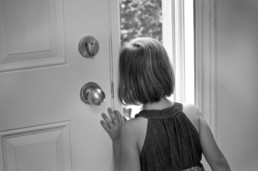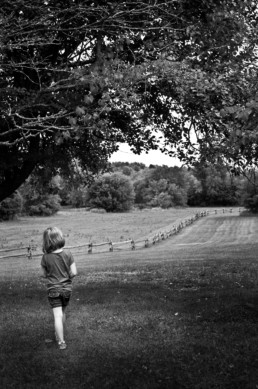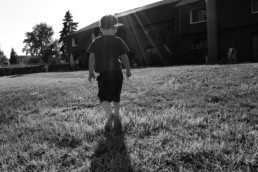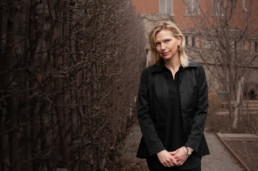As a portrait photographer, it should come as no surprise that I spend a lot of time preoccupied with faces. The face and the eyes after all provide a connection between subject and viewer.
But while the face is important in portraiture, it’s good to break the rules once and a while.
One way is to photograph subjects from behind. This won’t work for traditional portraits but it’s great for candid family documentary photography.
This approach is not without its difficulties. When you restrict yourself to a subject’s backside you limit the ways in which to draw a viewer in. Without a face to look upon, you must rely on other devices to make that all-important connection.
Here with examples, are a few short guidelines that I hope will inspire and aid you in this approach:
Create mystery or suspense. Turning the subject away from the viewer can create a sense of mystery or suspense. It is human nature to want to see what hides from view, so you can exploit this fact to great effect.
Use body language to convey meaning. A person’s posture and positioning can speak volumes. Waiting for the right gesture or movement can make a huge difference in the images that you capture. Look for interesting poses that convey meaning or create dynamism. Subtle movements work just as well in this case (a slight turn of the head, a gently raised foot or hand etc.).
Use lighting to create a mood. Lighting is an all-important element in any photograph. Lighting can help to create a mood and add interest and drama. When shooting, test how the light can improve your image. Sometimes a change of position or angle can make a big difference in your image.
For the sake of the blog, these guidelines are separate but in practice, you may apply them all to a single image. Challenge yourself the next time you are out documenting your family and try photographing your subjects from behind.
You may find the results can be very rewarding.
Bryan Gagnon
Working as a Digital Marketer, Designer and Content Producer, Bryan has launched numerous successful websites and digital campaigns in the public sphere. He is an accomplished photographer offering portraits, headshots, family documentary photography, and more. His project FLOW, which features his writing and photography, profiles individuals aged 40+ who are pursuing passion projects or lifestyles.
Related Posts:
Ann Shea: Turning a New Page
When Ann Shea followed Mill Street Books’ Facebook page, she never imagined the small act would forever alter the course of her life.
0 Comments9 Minutes
Vankleek Hill Tulip Fields: Where Hope Has Sprung
The pandemic inspired Mike Block and Sandra Bebbington-Block to make a change. Following their passion, they moved to Vankleek Hill and started their own tulip business.
0 Comments7 Minutes
Carolyne Van Der Meer: A Sense of Place Through Poetry
After many years as a journalist and communications professional, where her writing was always bound by her work, Carolyne Van Der Meer returned to poetry in 2008. That return…
3 Comments13 Minutes







